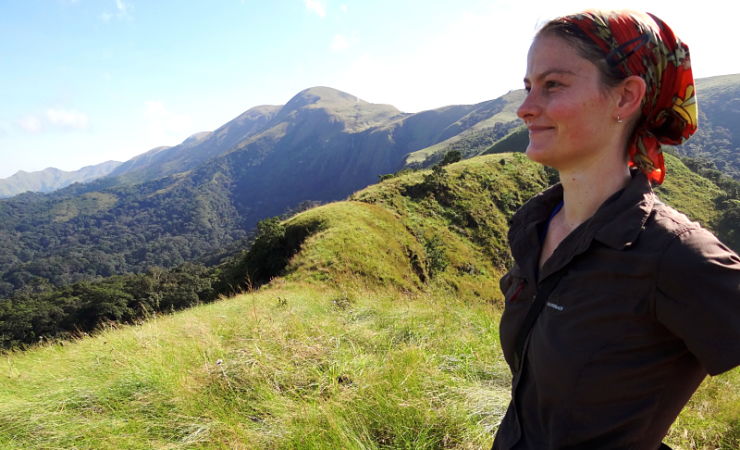Kathelijne Koops on Chimps and Tools

Kathelijne Koops, a biological anthropologist at the University of Zurich, works to determine what makes us human. And she approaches this quest by intensely studying the use of tools by other species across sub-Saharan Africa.
“Look at us now …” she tells interviewer David Edmonds in this Social Science Bites podcast. “We are really the ultimate technological species. And the question is, ‘How did we get to where we are now?’ If we want to know why we are so technological, and how do we acquire tool-use skills, etc., it’s really interesting to look at our closest living relatives, chimpanzees and also bonobos.
“Why do, or don’t they use tools, and what do they use tools for, and what environmental pressures might influence their tool use.”
So Koops has been studying, first as a grad student and now as director of her own lab, the Ape Behaviour & Ecology Group at the University of Zurich, several groups of wild apes. (Chimps and bonobos, along with orangutans and gorillas, are labelled as great apes, and with humans, are members of the family Hominidae.) She also directs the Swiss National Science Foundation-funded Comparative Human and Ape Technology Project, which looks at ecological, social and cognitive factors on the development of tool use.
In this interview, Koops focuses on two decades of work she and her team conducts, along with Guinean collaborators from the Institut de Recherche Environnementale de Bossou, in the Nimba Mountains in the southeastern portion of the West African country of Guinea. The field site is remote, and work takes place in 10-day shifts at one of two camps. Researchers gather data on the chimps during daylight hours – if the chimps cooperate. “If the chimpanzees want to get away they can,” Koops details, “so even though we’ve worked there a long time you cannot follow them all day like you can at some other study sites.” The researchers also use motion-triggered cameras near well-trod areas – the humans dubbed them “chimpanzee highways” – where the chimps frequent.
Among the tool-using behaviors Koops has seen in the study group is seeing these chimps use long sticks to dig up ants for a snack without being devoured themselves, and using stones and branches to open up fruit casings. What this group doesn’t do, she continued, is use “percussive techniques” to open up edible nuts, even though another population of chimps a few kilometers away does exactly that.
To see if it is opportunity or is it necessity that spurred tool use and tool evolution, Koops’ team “cranked opportunity up by a million” by scattering lots of nuts that were otherwise less common in the primary forest habitat of the Nimba residents alongside lots of handy stones good for nut-cracking. The result was … not much innovation by the chimps.
“It really seems difficult to innovate on your own,” she comments. “… They really need to see from another chimpanzee how to crack these nuts.” In general, she notes, there’s not much ‘active teaching’ among her subjects but a lot of observation of older individuals.
She cites other experimenters’ similar work on 4- and 5-year-old humans, which in turn saw similar low instances of innovation. While being careful not to overclaim, Koops says “it looks like some of the building blocks of our culture are really already there in chimps.”
To download an MP3 of this podcast, right-click HERE and save.
Join the debate and discuss this episode with fellow listeners on our Multytude conversation. Multytude is a new social media app that aims to make sense of the online conversation. With support from the SAGE Concept Grant, the Multytude team is working to create a new method of qualitative research for social scientists to better understand what people are saying about the big issues of today.
For a complete listing of past Social Science Bites podcasts, click HERE. You can follow Bites on Twitter @socialscibites and David Edmonds @DavidEdmonds100.

























































































